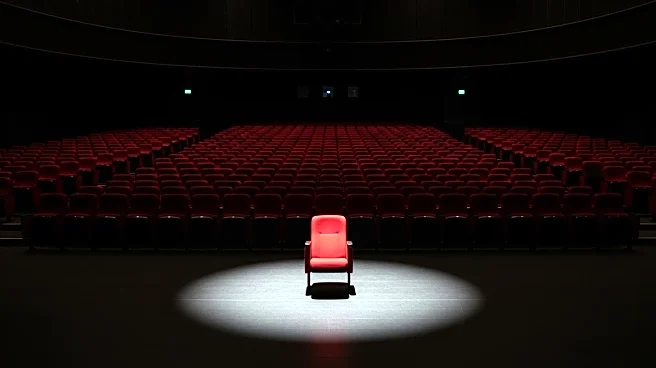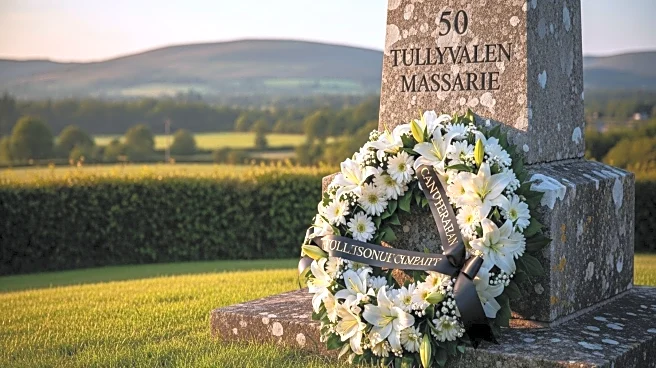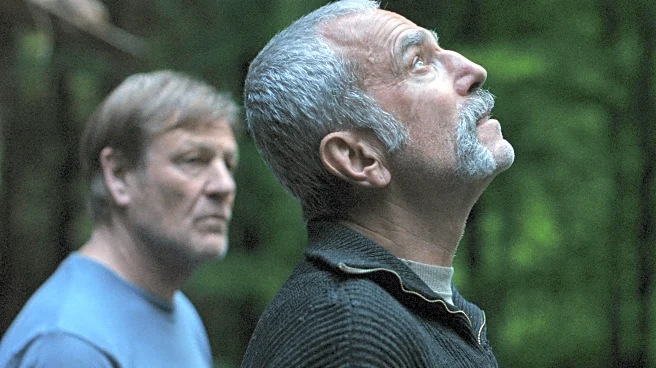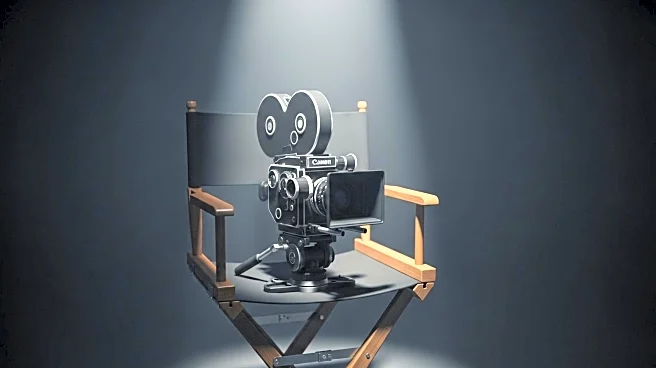What's Happening?
Ronan Day-Lewis, known for his evocative paintings, has made his directorial debut with the film 'Anemone.' The film opens with a childlike drawing depicting the Troubles in Northern Ireland, a conflict that spanned from the late 1960s to the 1990s. This historical backdrop sets the stage for the narrative, which follows Ray, played by Daniel Day-Lewis, as he confronts his past. The film, co-written by Ronan and his father, explores themes of brotherhood and personal ghosts. It premiered at the 63rd New York Film Festival and features a blend of visual storytelling and minimal dialogue, allowing the characters' relationships to unfold through subtle cues.
Why It's Important?
The release of 'Anemone' marks a significant moment in the intersection of visual art and film, showcasing how Ronan Day-Lewis translates his haunting artistic style into cinematic language. The film's exploration of historical and personal themes resonates with audiences familiar with the Northern Ireland conflict, offering a unique perspective on its lasting impact. Additionally, the collaboration between Ronan and his father, Daniel Day-Lewis, adds depth to the film's exploration of familial relationships. This project highlights the potential for artists to cross mediums, enriching both the art and film industries with innovative storytelling techniques.
What's Next?
Following the release of 'Anemone,' Ronan Day-Lewis plans to continue exploring filmmaking alongside his painting career. He has expressed interest in pursuing another film project that was in development before 'Anemone.' The film's reception may influence future collaborations and projects, potentially leading to more interdisciplinary works that blend visual art with narrative cinema. As 'Anemone' reaches wider audiences, it may spark discussions on the portrayal of historical conflicts in art and film, encouraging other artists to explore similar themes.
Beyond the Headlines
The film's use of visual motifs, such as the recurring 'creature' from Ronan's paintings, invites viewers to interpret the narrative on a symbolic level. This approach challenges traditional storytelling methods, emphasizing the power of visual art to convey complex emotions and themes. The film's exploration of the Troubles through a personal lens also raises questions about memory, trauma, and reconciliation, offering a nuanced perspective on historical events. As audiences engage with 'Anemone,' it may inspire further dialogue on the role of art in processing and understanding history.











